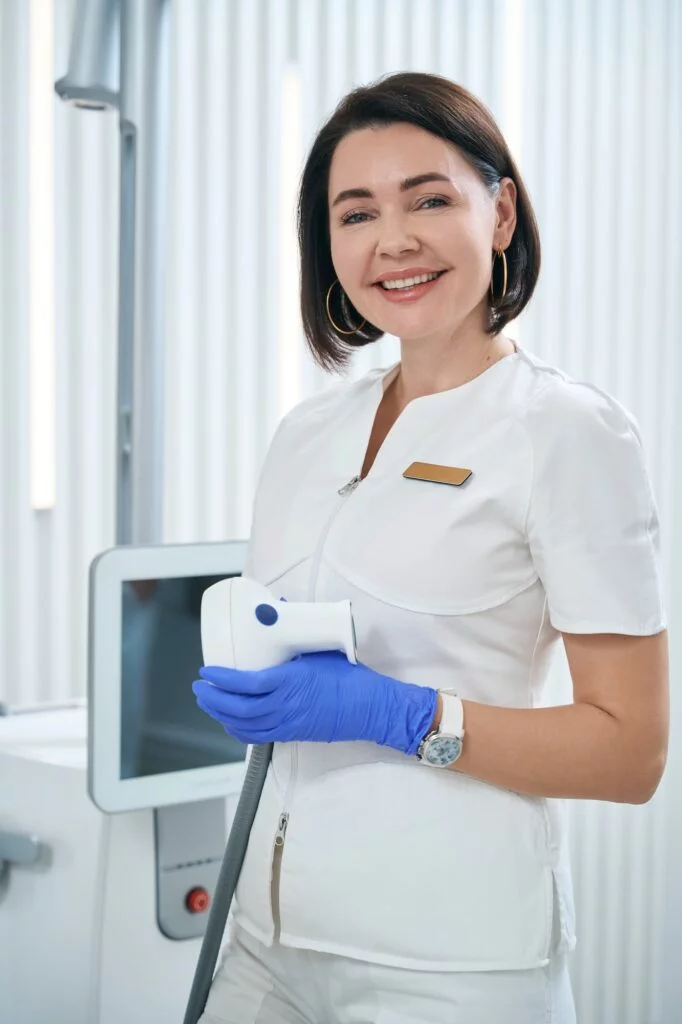If your primary care physician or gastroenterologists suspect you have a fatty liver disease not related to alcohol abuse, you may undergo a non-invasive, painless, and state-of-the-art diagnostic test called FibroScan. FibroScan gives the healthcare provider important assessment and treatment information–all within minutes. Here’s how it works.
FibroScan Utilizes Ultrasound Technology
Also called vibration-controlled transient elastography (VCTE), FibroScan uses ultrasound technology very similar to that used to assess the health and development of a fetus during pregnancy. The physician or technician uses a handheld transducer to send sound waves into the liver via the abdominal wall at specific speeds or velocities.
This transducer also measures how quickly the sound waves pass through the organ. These speeds translate into specific measures of liver stiffness or stenosis. The measures indicate whether or not a patient has non-alcoholic fatty liver disease or NAFLD and to what degree or stage. It also helps with the assessment and monitoring of serious conditions, such as hepatitis B and C.
However, FibroScan is not appropriate for patients who are retaining a large amount of abdominal fluid (ascites), are morbidly obese, or have a substantial amount of fatty tissue in the abdominal wall. Other tests, such as a liver biopsy, may be more useful and usable with these individuals.
A FibroScan Is Easy on the Patient
FibroScan takes just five to seven minutes to perform once the patient is comfortably positioned on his or her back on the examination table. A clear conductive gel is applied to the upper abdomen, and the transducer gently and painlessly glides over the area.
Several images are taken, and the abdomen is wiped clean. Results are available immediately to the healthcare provider. And, because there is no special preparation, such as fasting, medication, or sedation, patients simply get dressed and can drive themselves home.
Fortunately, because FibroScan is so easy and easily repeatable, GI doctors can diagnose liver diseases early on when they are less complex and easier to treat. Also, FibroScan helps stage and monitor the progress of liver problems for better therapeutic options and outcomes.
What FibroScan Scores Mean
FibroScan produces two kinds of scores–the CAP score and the fibrosis score. A CAP score of more than 5 and up to 11 percent indicates mild fatty liver disease, a score of 33 to 66 percent indicates moderate disease, and a score of more than 66 percent is severe.
The fibrosis score is different. It is used to understand how seriously liver diseases, such as cirrhosis, may have damaged the liver. Typical scores produced on a FibroScan are:
- F0 Little to no damage to the liver
- F1 Little to no damage to the liver
- F2 Moderate liver scarring
- F3 Severe liver scarring and impaired blood flow
- F4 Irreversible liver damage
Liver health specialists use CAP and fibrosis scores to plan medical treatments and to predict the survivability of serious liver disease and dysfunction. Plus, because of its accuracy and ease of administration, FibroScan is a real boon to GI doctors and patients dealing with complex co-morbidities, such as cancer.
FibroScan in California
At Genensis Healthcare Partners Health Care, our team of board-certified, fellowship-trained gastroenterologists uses FibroScan to conveniently and accurately assess the liver health of patients across the state of California. We have 20 locations, so there is one near your home or place of employment.
To know more about our services or to arrange a consultation with one of our FibroScan doctors, call the location nearest you or use our convenient online appointment request form.



